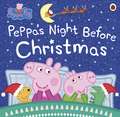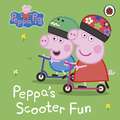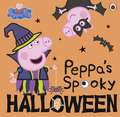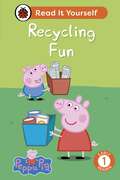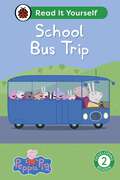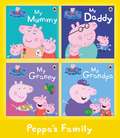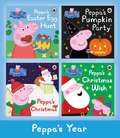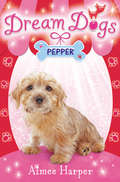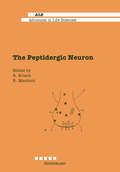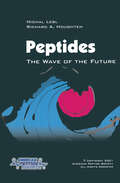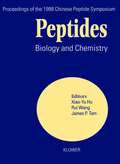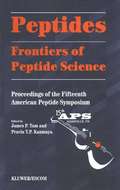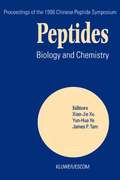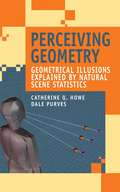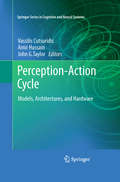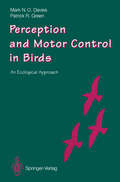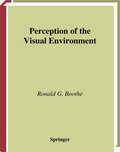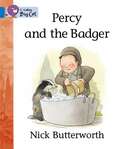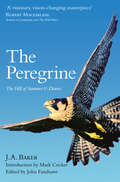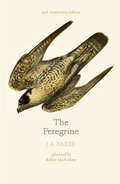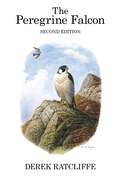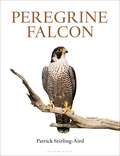- Table View
- List View
Peppa Pig: Peppa's Night Before Christmas (Peppa Pig)
by Peppa PigThis timeless Christmas classic has been updated for Peppa Pig in a brand new, fully rhyming story!It's the most magical night of the year... Christmas Eve! Maybe Peppa and George will meet a special visitor.It's the perfect Christmas present for Peppa fans everywhere!
Peppa Pig: Peppa’s Scooter Fun (Peppa Pig)
by Peppa PigPeppa travels to playgroup on her scooter in this travel-tastic new story!Madame Gazelle has asked Peppa and her friends to travel to playgroup in their favourite way. Peppa loves her scooter . . . But which way will everyone else like best?Ride along with Peppa and friends and learn how to stay safe on the road!Everybody loves Scooters! Also Available:Peppa Pig: Peppa Plays RugbyPeppa Pig: Peppa's Camper VanPeppa Pig: Peppa Loves YogaPeppa Pig: Peppa and the Big Train
Peppa Pig: Peppa's Spooky Halloween (Peppa Pig)
by Peppa PigIt's Halloween and Peppa and George are at Grandpa and Granny Pig's house! Together they try on some spooky costumes, decorate the house in spooky decorations and bake some spooooky treats. Everything's ready just in time for their Spooky Show!
Peppa Pig Recycling Fun: Read It Yourself - Level 1 Early Reader (Read It Yourself)
by Ladybird Peppa PigBased on the award-winning children's series!Featuring everyone's favourite little piggy, Peppa! Join Peppa and her family on their fun day recycling their rubbish. You'll never guess what Miss Rabbit tries to recycle next...Peppa Pig: Recycling Fun is is from Early Reader Level 1 and is perfect for children aged from 4+ who are taking their first steps beyond phonics.Each book has been carefully checked by educational and subject consultants and includes comprehension puzzles, book band information, and tips for helping children with their reading.With five levels to take children from first phonics to fluent reading and a wide range of different stories and topics for every interest, Read It Yourself helps children build their confidence and begin reading for pleasure
Peppa Pig School Bus Trip: Read It Yourself - Level 2 Developing Reader (Read It Yourself)
by Ladybird Peppa PigBased on the award-winning children’s series!Featuring everyone’s favourite little piggy, Peppa!All aboard the school bus! Join Peppa and her classmates on a fun trip to the mountains, where they sing songs and see beautiful scenery along the way. What adventures are in store when they reach their destination? School Bus Trip is from Developing Reader Level 2 and is ideal for readers aged from 5+ who can read short, simple sentences with help.Each book has been carefully checked by educational and subject consultants and includes comprehension puzzles, book band information, and tips for helping children with their reading.With five levels to take children from first phonics to fluent reading and a wide range of different stories and topics for every interest, Read It Yourself helps children build their confidence and begin reading for pleasure.
Peppa’s Family (Peppa Pig Ser.)
by Ladybird Peppa PigJoin Peppa Pig and her brother George as they list all of the things they love about their daddy, mummy, granny and grandpa, from Mummy Pig's comforting cuddles to Grandpa Pig's great bedtime stories. These four delightful stories are perfect for sharing with mummies, daddies, grannies and grandpas everywhere. This 4-in-1 Ebook bundle includes: My Daddy, My Mummy, My Granny, and My Grandpa.
Peppa’s Year
by Ladybird Peppa PigJoin Peppa Pig on an Easter egg treasure hunt, at a spooktacular Halloween party and as Peppa and her family get ready for Christmas. These four stories are perfect for sharing with little Peppa Pig fans at Easter, Halloween and Christmas time.This 4-in-1 Ebook bundle includes: Peppa's Easter Egg Hunt, Peppa's Pumpkin Party, Peppa's Christmas, and Peppa's Christmas Wish.
Pepper (Dream Dogs #1)
by Aimee HarperThe first in a fab animal series set in a glamorous pooch parlour, for animal-crazy girls who love dogs and looking after them.
Peptides: Proceedings of the Second International and the Seventeenth American Peptide Symposium, June 9–14, 2001, San Diego, California, U.S.A. (American Peptide Symposia #7)
by Richard A. Houghten Michal LeblThis volume contains the proceedings of the Second International Peptide Symposium and the Seventeenth American Peptide Symposium, held on 9-14 June, 2001, at the Town and Country Resort in San Diego, California. The biennial meeting was held under the auspices of the American Peptide Society. In addition to the main Symposium, we were honored to have the Merrifield Satellite Symposium, honoring Bruce Merrifield's accomplishments on his 80th birthday. Over 1250 participants from around the world attended the lectures, posters, and exhibits. Reflecting the international nature of the Symposium, there were participants from 37 countries in attendance. In addition to the 75 plenary lectures, there were over 575 poster presentations, and 70 commercial exhibits as well as booths from the American, Australian, Chinese, European, and Japanese Peptide Societies. These proceedings include plenary lectures and oral and poster presentations collected from a wide diversity of topics providing a truly comprehensive and up-to-date overview of the field of peptide science. This publication contains essential reference information for researchers active in peptide science.
Peptides: Biology and Chemistry (Chinese Peptide Symposia)
by James P. Tam Xiao-Yu Xiao-Yu Hu Rui Rui WangThe Fifth Chinese Peptide Symposium, hosted by Lanzhou University, was held at Lanzhou, China July 14-17, 1998, with 156 participants, including 30 scientists from abroad, representing nine countries. The four-day conference was both intense and spiritually rewarding. Our goal for CPS-98 was to provide a forum for the exchange of knowledge, cooperation and friendship between the international and Chinese scientific communities, and we believe this goal was met. The symposium consisted of 8 sessions with 42 oral and 90 poster presentations, including synthetic methods, molecular diversity and peptide libraries, structure and conformation of peptides and proteins, bioactive peptides, peptide immunology, De Novo design and synthesis of proteins and peptides, ligand-receptor interactions, the chemistry-biology-interface and challenging problems in peptides. The enthusiastic cooperation and excellent contributions were gratifying and the active response of the invited speakers contributed to the success of the symposium. The presentations were of excellent caliber and represented the most current and significant aspects of peptide science. Dr. Kit Lam of the University of Arizona and Dr. Yun-Hua Ye of Peking University were the recipients of “The Cathay Award” sponsored by the H. H. Liu Education Foundation, offered for their seminal contribution in peptide science and the Chinese Peptide Symposium. Four outstanding young scientists were selected by the organizing committee to receive awards sponsored by Haikou Nanhai Pharmaceutical Industry Co. Ltd. (Zhong He Group).
Peptides: Frontiers of Peptide Science (American Peptide Symposia #5)
by James P. Tam Pravin T. P. KaumayaThe Fifteen American Peptide Symposium (15APS) was held in Nashville, Tennessee, on June 14-19, 1997. This biennial meeting was jointly sponsored by the American Peptide Society and Vanderbilt University. The attendance of 1,081 participants from 37 countries was lower than the two previously held Symposia. However, the number of participating countries was the largest. Thus, it was gratifying to see that this meeting retained both its international flavor and participant loyalty at a time when there are many more symposia held each year on similar subjects. The scientific program, thanks to the insights and efforts of the Program Committee as well as Dr. Peter Schiller, the President of the American Peptide Society, was extraordinarily rich, diverse, and exciting. It was comprised of 124 oral and 550 poster presentations. Three prominent format changes were installed. First, the Symposium started on Saturday instead of Sunday. Second, the program opened on Saturday afternoon with a Mini-symposium by the Young Investigators to give them an early start and attention. Finally, 40 short and definitive reports were given in two parallel sessions. The expanded format permitted an unprecedented number of lectures and enabled wider participation by the attending delegates.
Peptides: Biology and Chemistry (Chinese Peptide Symposia)
by James P. Tam Xiao-Jie Xiao-Jie Xu Yun-Hua Yun-Hua YeThe fourth Chinese Peptide Symposium, hosted by Peking University, was held at Chengdu, China on July 21 25, 1996 with 164 participants, including 45 scientists from abroad, representing 12 countries. The four day conference was both intense and spiritually rewarding. Our goal for CPS 96 was to provide a forum for the exchange of knowledge, cooperation and friendship between the international and Chinese scientific communities, and we believe this goal was met. The symposium consisted of 10 sessions with 55 oral and 78 poster presentations, including synthetic methods, molecular diversity and peptide libraries, structure and conformation of peptides and proteins, bioactive peptides, peptide immunology, De Novo design and synthesis of proteins and peptides, ligand receptor interactions, the chemistry biology interface and challenging problems in peptides. Theenthusiasticcooperationandexcellentcontributionsweregratifying andtheactive response of the invited speakers contributed to the success of the symposium. The presentations were of excellent caliber and represented the most current and significant aspects of peptide science. Dr. James P. Tam and Dr. Jie Cheng Xu were the recipients of ‘The Cathay Award’ sponsored by the H. H. Liu Education Foundation, offered for their seminal contributions in peptide science and the Chinese Peptide Symposium. Four outstanding young scientists were selected by the organizing committee to receive awards sponsored by Haikou Nanhai Pharmaceutical Industry Co. Ltd. (Zhong He Group).
Perceiving Geometry: Geometrical Illusions Explained by Natural Scene Statistics
by Catherine Q. Howe Dale PurvesDuring the last few centuries, natural philosophers, and more recently vision scientists, have recognized that a fundamental problem in biological vision is that the sources underlying visual stimuli are unknowable in any direct sense, because of the inherent ambiguity of the stimuli that impinge on sensory receptors. The light that reaches the eye from any scene conflates the contributions of reflectance, illumination, transmittance, and subsidiary factors that affect these primary physical parameters. Spatial properties such as the size, distance and orientation of physical objects are also conflated in light stimuli. As a result, the provenance of light reaching the eye at any moment is uncertain. This quandary is referred to as the inverse optics problem. This book considers the evidence that the human visual system solves this problem by incorporating past human experience of what retinal images have typically corresponded to in the real world.
Perception-Action Cycle: Models, Architectures, and Hardware (Springer Series in Cognitive and Neural Systems)
by Vassilis Cutsuridis, Amir Hussain and John G. G. TaylorThe perception-action cycle is the circular flow of information that takes place between the organism and its environment in the course of a sensory-guided sequence of behaviour towards a goal. Each action causes changes in the environment that are analyzed bottom-up through the perceptual hierarchy and lead to the processing of further action, top-down through the executive hierarchy, toward motor effectors. These actions cause new changes that are analyzed and lead to new action, and so the cycle continues. The Perception-action cycle: Models, architectures and hardware book provides focused and easily accessible reviews of various aspects of the perception-action cycle. It is an unparalleled resource of information that will be an invaluable companion to anyone in constructing and developing models, algorithms and hardware implementations of autonomous machines empowered with cognitive capabilities. The book is divided into three main parts. In the first part, leading computational neuroscientists present brain-inspired models of perception, attention, cognitive control, decision making, conflict resolution and monitoring, knowledge representation and reasoning, learning and memory, planning and action, and consciousness grounded on experimental data. In the second part, architectures, algorithms, and systems with cognitive capabilities and minimal guidance from the brain, are discussed. These architectures, algorithms, and systems are inspired from the areas of cognitive science, computer vision, robotics, information theory, machine learning, computer agents and artificial intelligence. In the third part, the analysis, design and implementation of hardware systems with robust cognitive abilities from the areas of mechatronics, sensing technology, sensor fusion, smart sensor networks, control rules, controllability, stability, model/knowledge representation, and reasoning are discussed.
Perception and Motor Control in Birds: An Ecological Approach
by Mark N. O. Davies Patrick R. GreenBeing both broad - perception and motor organization - and narrow - just onegroup of animals - at the same time, this book presents a new unified framework for understanding perceptuomotor organization, stressing the importance of an ecological perspective. Section I reviews recent research on a variety of sensory and perceptual processes in birds, which all involve subtle analyses of the relationships between species' perceptual mechanisms and their ecology and behaviour. Section II describes the variousresearch approaches - behavioural, neurophysiological, anatomical and comparative - all dealing with the common problem of understanding how the activities of large numbers of muscles are coordinated to generate adaptive behaviour. Section III is concerned with a range of approaches to analyzing the links between perceptual and motor processes, through cybernetic modelling, neurophysiological analysis, and behavioural methods.
Perception of the Visual Environment
by Ronald G. BootheAimed at students taking a course on visual perception, this textbook considers what it means for a man, a monkey and a computer to perceive the world. After an introduction and a discussion of methods, the book deals with how the environment produces a physical effect, how the resulting "image" is processed by the brain or by computer algorithms in order to produce a perception of "something out there". It also discusses color, form, motion, distance, and also the sensing of three dimensionality, before dealing with visual perception and its role in awareness and consciousness. The book concludes with discussions of perceptual development, blindness, and visual disorders. Visual perception is by its very nature an interdisciplinary subject that requires a basic understanding of a range of topics from diverse fields, and this is a very readable guide to all students whether they come from a neuroscience, psychology, cognitive science, robotics, or philosophy background.
The Peregrine: Afterword By Robert Macfarlane
by J. A. BakerReissue of J. A. Baker’s extraordinary classic of British nature writing, with an exclusive new afterword by Robert Macfarlane.
The Peregrine Falcon (Poyser Monographs #69)
by Derek RatcliffeThe first edition of The Peregrine Falcon was widely recognised as a classic of its kind, documenting not only the species' biology but also the sad tale of its decline due to the impact of pesticides. This extensively revised and enlarged second edition takes full account of important new developments in the story of this bird during the intervening 12 years. It reports one of the few notable successes in wildlife conservation: the full restoration of British and Irish Peregrine populations, and their appreciable recovery in other countries where numbers had also been greatly reduced by the impact of organochlorine pesticides. The pattern of increase in Britain has been extremely varied, from districts where numbers are now far higher than at any time in recorded history, to others where the bird is now at its lowest ebb. The examination of the reasons for these differences helps us to understand the most recent developments in the Peregrine saga. Particular attention has been paid to the recent major advances in our knowledge of Peregrine biology, such as its movements, population turnover, food and nesting habits. Many of the tables and figures have been revised and brought up to date so that this volume, like its predecessor, is once again by far the most detailed and readable reference on this most evocative of birds. Donald Watson's colour paintings, monochrome washes and line drawings, and the original photographs, illustrate the book as before. Cover illustration by Donald Watson
Peregrine Falcon
by Patrick Stirling-AirdReaching speeds in excess of 200 miles per hour, the Peregrine Falcon is famous as the world's fastest bird. However, its penchant for choosing inaccessible places to breed, feed and roost mean that few people are well acquainted with its habits and behaviour. This ebook offers a window into that rarely seen world, thanks to a combination of high quality images and beautifully written text, with chapters on subjects such as hunting, raising young and how populations around the world have rallied against the threat of extinction and are now prospering once again.The birds are further brought to life through a series of personal anecdotes from the author and photographers, which are woven into the text. The ebook is part of a series that also includes the titles Barn Owl and Kingfisher.
The Peregrine Returns: The Art and Architecture of an Urban Raptor Recovery
by Mary HennenPeregrine falcons have their share of claims to fame. With a diving speed of over two hundred miles per hour, these birds of prey are the fastest animals on earth or in the sky, and they are now well known for adapting from life on rocky cliffs to a different kind of mountain: modern skyscrapers. But adaptability only helps so much. In 1951, there were no peregrines left in Illinois, for instance, and it looked as if the species would be wiped out entirely in North America. Today, however, peregrines are flourishing. In The Peregrine Returns, Mary Hennen gives wings to this extraordinary conservation success story. Drawing on the beautiful watercolors of Field Museum artist-in-residence Peggy Macnamara and photos by Field Museum research assistant Stephanie Ware, as well as her own decades of work with peregrines, Hennen uses a program in Chicago as a case study for the peregrines’ journey from their devastating decline to the discovery of its cause (a thinning of eggshells caused by a by-product of DDT), through to recovery, revealing how the urban landscape has played an essential role in enabling falcons to return to the wild—and how people are now learning to live in close proximity to these captivating raptors. Both a model for conservation programs across the country and an eye-opening look at the many creatures with which we share our homes, this richly illustrated story is an inspiring example of how urban architecture can serve not only our cities’ human inhabitants, but also their wild ones.
The Peregrine Returns: The Art and Architecture of an Urban Raptor Recovery
by Mary HennenPeregrine falcons have their share of claims to fame. With a diving speed of over two hundred miles per hour, these birds of prey are the fastest animals on earth or in the sky, and they are now well known for adapting from life on rocky cliffs to a different kind of mountain: modern skyscrapers. But adaptability only helps so much. In 1951, there were no peregrines left in Illinois, for instance, and it looked as if the species would be wiped out entirely in North America. Today, however, peregrines are flourishing. In The Peregrine Returns, Mary Hennen gives wings to this extraordinary conservation success story. Drawing on the beautiful watercolors of Field Museum artist-in-residence Peggy Macnamara and photos by Field Museum research assistant Stephanie Ware, as well as her own decades of work with peregrines, Hennen uses a program in Chicago as a case study for the peregrines’ journey from their devastating decline to the discovery of its cause (a thinning of eggshells caused by a by-product of DDT), through to recovery, revealing how the urban landscape has played an essential role in enabling falcons to return to the wild—and how people are now learning to live in close proximity to these captivating raptors. Both a model for conservation programs across the country and an eye-opening look at the many creatures with which we share our homes, this richly illustrated story is an inspiring example of how urban architecture can serve not only our cities’ human inhabitants, but also their wild ones.
The Peregrine Returns: The Art and Architecture of an Urban Raptor Recovery
by Mary HennenPeregrine falcons have their share of claims to fame. With a diving speed of over two hundred miles per hour, these birds of prey are the fastest animals on earth or in the sky, and they are now well known for adapting from life on rocky cliffs to a different kind of mountain: modern skyscrapers. But adaptability only helps so much. In 1951, there were no peregrines left in Illinois, for instance, and it looked as if the species would be wiped out entirely in North America. Today, however, peregrines are flourishing. In The Peregrine Returns, Mary Hennen gives wings to this extraordinary conservation success story. Drawing on the beautiful watercolors of Field Museum artist-in-residence Peggy Macnamara and photos by Field Museum research assistant Stephanie Ware, as well as her own decades of work with peregrines, Hennen uses a program in Chicago as a case study for the peregrines’ journey from their devastating decline to the discovery of its cause (a thinning of eggshells caused by a by-product of DDT), through to recovery, revealing how the urban landscape has played an essential role in enabling falcons to return to the wild—and how people are now learning to live in close proximity to these captivating raptors. Both a model for conservation programs across the country and an eye-opening look at the many creatures with which we share our homes, this richly illustrated story is an inspiring example of how urban architecture can serve not only our cities’ human inhabitants, but also their wild ones.
